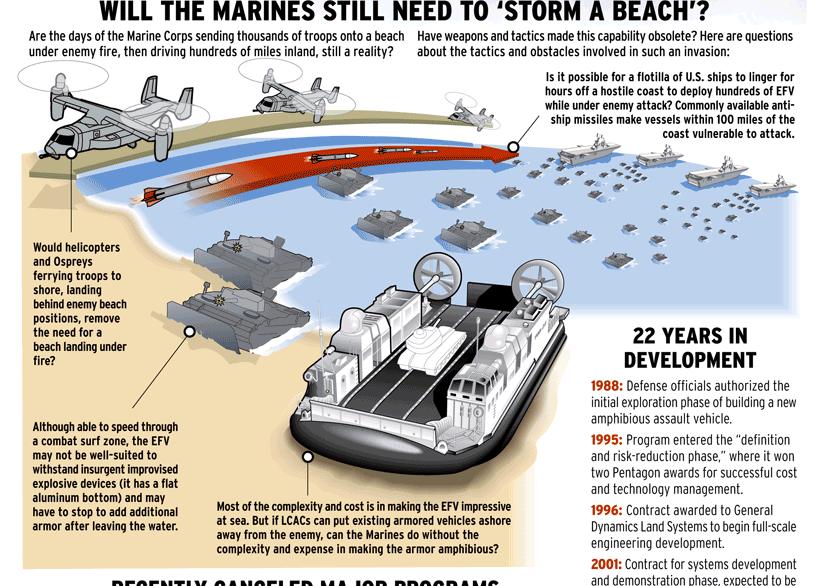For more than a decade now we have been engaged in what we have called a global war on terror, which is an awful name for it since we cannot war against a tactic. We have actually been engaged in a war with militant Islam, but since we don’t want to speak truth, we make up slogans that hide the truth.
Congress voted in both Operation Enduring Freedom and Operation Iraqi Freedom to give the President the authority to use force to effect our desired ends in those campaigns. Call it what you will, these were declarations of war, albeit against a country in one case, and against a transnational religious insurgency in another case. Actually, since Salafists of various stripes and other Islamic religious fanatics crossed the Jordanian and Syrian border to fight the U.S. in Iraq, at some 80 – 100 per month at the height of it, we have fought a transnational religious insurgency in both Iraq and Afghanistan. In both cases the use of force was authorized by Congress.
But in any case, I have repeatedly called on the reader to study the first chapter of Robert Kaplan’s book Imperial Grunts, the chapter being entitled “Injun Country.” It might disavow the reader of the notion that America was conceived or raised in military isolationism. Nothing could be further from the truth. I have also pointed out that from the very inception of the U.S. Marine Corps, before the effective date of the declaration of independence, the continental congress knew exactly what they were doing. The model they followed was the British Marines, and the British Marines functioned as an imperial force. This design was intentional from the beginning, whether the colonists (or readers today) knew it or not.
Daniel Trombly writing at Slouching Towards Columbia, does an outstanding job of filling in the details for us. His post will be repeated at length.
The Constitution is not explicit that any kind of warfare must be validated by a Congressional declaration of war. Madison was quite clear that in a case where the United States was defending itself from attack, no declaration of war was necessary. This has been a decision constantly reaffirmed throughout American history, and the debates surrounding the drafting of that portion of the Constitution clearly reveal that the founders saw a distinction between declaring and making war, and explicitly did not require a Congressional declaration for America to make war, only to begin one where no hostile act had initiated it. In other words, beyond continued Congressional approval for whatever financing of the war effort is necessary, there is no requirement for a formal declaration of war for the United States to prosecute one should the war occur in reaction to the commencement of war by a hostile force.
The notion that drones are responsible for the “short-circuiting” of America’s process for going to war is illusory – particularly when the idealized version of warfare Singer describes was never the historical norm for the United States. Very few American wars have been fought with a formal declaration of war, including two of America’s earliest overseas conflicts.
Indeed, America’s flirtation with undeclared wars with broad Congressional mandates is obvious from the very historical existence of the phrase “Quasi-War,” describing US hostilities with France under the Adams administration. There, the US found it sufficient to pass a Congressional measure authorizing naval action against French ships. Lest anyone chalk this up to a mere outlying tendency in US politics, Adams’s political foe, Jefferson, continued and indeed expanded the trend significantly under his own administration.
Thomas Jefferson was eager to prosecute a war against the Barbary pirates, which had amorphous links to recognized political authorities. Yet Jefferson did not seek and Congress did not require a formal declaration of war against an enemy considered to be both hostis humani generis (hostile to all mankind, as most seafaring nations considered pirates) and engaged already in persistent hostilities against American civilian vessels. Congress passed a relatively broad mandate for military force, and Thomas Jefferson’s military proceeded to wage an undeclared war with amorphous boundaries against Islamic unconventional actors, along with the help of private mercenary armies. One can make arguments about why America should not prosecute undeclared wars, fight non-state actors alone, or use privately contracted military forces, but any appeal to the founding fathers is unconvincing at best and a cynical ploy at worst.
To blame drones for the trend of undeclared wars that has existed since America’s earliest years is grossly historically inaccurate. Not only does it completely fail to explain America’s participation in the Quasi-War, Barbary Wars, Indian Wars, and the several formally undeclared wars of the 20th century after World War II, it also fails to explain the conflicts which the United States has begun since drones existed. It is quite difficult to say there are any ongoing military campaigns which began or persist solely because of “risk free” drones. The broad authorization for use of military force which began the War on Terror and its “undeclared” nature has very little to do with drone technology, and more to do with the fact that the United States has never formally declared war on a non-state actor in its history. Even in areas frequently identified with drone warfare, such as the Horn of Africa, Yemen, and Pakistan, non-drone US interference has occurred at varying levels of frequency during the War on Terror.
[ … ]
As uncomfortable as it might make foreign policy commentators (sometimes myself included), the founders always recognized a difference between military operations involving sustained use of land forces and those involving a primarily maritime or over-the-horizon force. This distinction is quite evident in the American Constitution, which as any sea power booster will tell you, stipulates that while an army should only be raised temporarily, Congress must provide and maintain a navy. This distinction has carried throughout American history (Even in the case of the Posse Comitatus Act, only the US Army and Air Force are specifically excluded from intervening in domestic affairs. The United States Navy and Marine Corps are actually only excluded under an internal Department of Defense directive). The American imperative to keep sea lanes flowing freely and protect the sovereign rights of American vessels and citizens overseas has been a much stronger push for American military involvement than drones have been or ever will be.
Daniel focuses on the use of UAVs in his article, and I am completely uninterested in UAVs. But his prose is on point concerning the use of military power throughout the nation’s history. More specifically concerning drones, the policy makers and strategists seem to be under the magical spell of the tech ninja warriors who believe that we can engage in push-button war and win.
Drones were useful when engaging non-state actors who had little financing or technology. As we have seen recently with Iran, nominal technology can shoot drones out of the air. Pilots will always be needed to fly fighters, warriors will always need to put boots on the ground, and ships will always need to support troops closer than the 20 mile “beyond the horizon” that they want to avoid. There is no answer to the costliness of war, and gutting defense spending to pay for entitlements won’t supply either with enough funding. The cost for war-making won’t go away, and the appetite for entitlements only grows with more spending like an obscene addiction.
I have pointed out before that progressives have always wanted to make war differently, that they claim to support equality of the genders (in the face of biological evidence to the contrary), and that they claim to be neo-isolationist concerning the use of American military power. But progressives don’t tell you everything. They’re lying in most, if not all cases.
They also want to increase the size of special operations, and it is well known that the SEALs, Rangers, Delta and Force Recon don’t accept females – and for good reason. But that doesn’t stop the progressives. They want more of the same, they just want war to be clinical, rapid and clean. It’s good enough to ensure that females are in the general purpose forces so that they progressives can claim to be morally superior. The reality of females carrying a 120 pound kit like Marine infantry or Rangers isn’t discussed. Since special operations is always under a cloak of secrecy, word of their work doesn’t usually get out. The progressives like it that way. They want to engage in war, they just don’t want the public to know about it, or Congress to get involved other than funding the war-making. OPSEC and all of that, you know. Shhhh …
This has always been true. It is true now, and we see that the size of special operations is going to increase while the size of the so-called general purpose forces will decrease by some 15%. In fact, they want virtual permanent deployment for some special operations.
The Pentagon is rushing to send a large floating base for commando teams to the Middle East as tensions rise with Iran, al-Qaeda in Yemen and Somali pirates, among other threats.
In response to requests from U.S. Central Command, which oversees military operations in the Middle East, the Navy is converting an aging warship it had planned to decommission into a makeshift staging base for the commandos. Unofficially dubbed a “mothership,” the floating base could accommodate smaller high-speed boats and helicopters commonly used by Navy SEALs, procurement documents show.
Special Operations forces are a key part of the Obama administration’s strategy to make the military leaner and more agile as the Pentagon confronts at least $487 billion in spending cuts over the next decade.
Lt. Cmdr. Mike Kafka, a spokesman for the Navy’s Fleet Forces Command, declined to elaborate on the floating base’s purpose or to say where, exactly, it will be deployed in the Middle East. Other Navy officials acknowledged that they were moving with unusual haste to complete the conversion and send the mothership to the region by early summer.
They have even taken one of the assets of the U.S. Marine Corps, an amphibious assault dock. All the while, as the Marines continue to imagine that they will ever do a large scale, sea-based forcible entry again, they sink deeper into complete irrelevance in the twenty first century. Visions of Iwo Jima dance in the heads of Marine Corps planners, while the real fight – the one the Marines should be leading – goes to what has effectively become another (secretive) branch of the service, SOCOM.
American history is replete with examples of warfighting without a formal declaration of war. But the main focus has usually been the U.S. Marine Corps. The strategic planners of the Marine Corps have lost their way, and continue to send Force Recon Marines into SOCOM rather than develop and enhance their own capabilities to conduct such operations. They have even retired the only remaining asset in their air fleet that is capable of inserting Marines by fast-roping. The V-22 cannot do that. But when the final story is told, we will not be safer for creating another branch of the service, or for gutting military spending in favor of the tech ninja paradigm. We will regret it.
Prior:
Expeditionary Warfare Category
Abolish SOCOM





